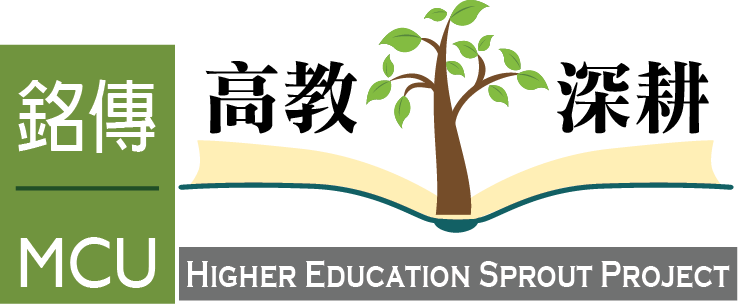1. Project Background
In response to the vision of the current Higher Education Sprout Project, this development initiative will focus on new technologies, including artificial intelligence (AI), the Internet of Things (IoT), big data, and blockchain, integrated into teaching. The Smart Integration Campus serves as the execution and integration center, aiming to innovate teaching through course planning and the creation of conducive teaching environments. By collaborating with industries, engaging students in industry-academia practices and internships, and fostering comprehensive education, the initiative seeks to cultivate talents equipped with practical skills, innovative thinking, and global employability. This aligns with the institution’s holistic education approach and the teaching strategy of “learning by doing, doing by learning,” to realize the goal of “innovative teaching and integrated learning.”
The Smart Integration Campus adopts a phased strategy, focusing on course development, digital industry alignment, interdisciplinary collaboration, scenario-based integrative courses, and internships that link education with practice. This approach aims to equip students with essential interdisciplinary capabilities to meet the dynamic needs of society and industries.
Through institutional research, a correlation has been identified between programming course performance and graduates’ salaries. Consequently, the university has made programming and AI mandatory for all freshmen, with colleges creating relevant instructional materials. While all students are required to take programming courses, the campus currently lacks sufficient smart technology labs and classrooms to support skill development, underscoring the need for enhancements in this area.
In interdisciplinary learning, of the 3,247 recent graduates, 1,036 (31.91%) obtained certification, averaging one in three graduates. Additionally, 418 undergraduates obtained certifications, totaling 1,454. Although 8,001 students (45.18% of the student body) applied for such programs, there remains room for growth. To encourage interdisciplinary exploration, the institution plans to expand both the number of participants and certifications awarded while developing modularized frameworks to facilitate interdisciplinary credit acquisition.
In terms of international mobility, the university offers English-taught degree programs and has enrolled international students from 97 countries. To further support these students, flipped classroom materials and Mandarin courses are provided. However, the annual ratio of students participating in overseas exchanges is still below 2%. Thus, efforts will focus on increasing intercultural exchanges, enhancing the proportion of international students, and expanding international learning opportunities.
For self-directed learning and competency development, the university emphasizes five core competencies: civic literacy, critical thinking, cultural literacy, environmental literacy, and teamwork. Analysis shows that teamwork, critical thinking, and cultural literacy significantly influence self-directed learning, interdisciplinary problem-solving, and social engagement, with civic literacy notably impacting problem-solving and social participation.
Curriculum reform is pivotal to achieving these goals. The plan focuses on six key points:
- Aligning with national talent needs, such as ICT, STEAM, AI, bilingual education, and interdisciplinary integration.
- Meeting industry demands for innovation in fields like media, animation, communication, big data, IoT, and emerging technologies.
- Adapting to changes in high school education under the 2019 curriculum guidelines, bridging fundamental literacy and skills to university professional training.
- Strengthening the unique characteristics of each college to address demographic challenges through differentiation and innovative education.
- Integrating the United Nations Sustainable Development Goals (SDGs) into the curriculum.
- Developing core competencies, including UCAN employability skills, common core abilities, and professional skills.
The curriculum reform plan will proceed in eight steps:
- Framework Planning: Redesigning the curriculum structure and modular frameworks.
- Curriculum Planning: Revising course content, syllabi, learning objectives, and teaching methods.
- Validation Planning: Developing systems to verify course effectiveness.
- Execution Verification: Implementing validation systems across colleges.
- Review and Feedback: Refining the curriculum through evaluations.
- Expert Consultation: Engaging experts for review and refinement.
- Review Meetings with Experts: Addressing issues collaboratively for improved planning.
- Career Curriculum Mapping: Aligning curriculum with career opportunities to support student employability.
2. Objectives and Philosophy
The initiative aims to enhance teaching quality through comprehensive curriculum reform, innovative teaching methodologies, and competency-based learning. This includes developing AI-integrated interdisciplinary environments, fostering self-directed learning, and bridging professional and interdisciplinary skills. By aligning college specializations with industry needs and emphasizing practical training, the initiative seeks to equip students with technical and humanistic competencies essential for future careers.
For faculty, the focus is on promoting cross-disciplinary teaching innovation and research, emphasizing knowledge, competency, self-directed learning, and interdisciplinary expertise. Students will develop professional skills, problem-solving abilities, multilingual proficiency, technological adaptability, and a global outlook, making them adept at mastering emerging technologies. The Smart Integration Campus serves as a hub for connecting colleges, communities, and industries to cultivate core talents aligned with future industry needs.
3. Project Framework
a. Competency-Infused Innovative Teaching
Faculty will adopt innovative teaching models by integrating professional competencies, problem-based learning (PBL), blended learning, AI fundamentals, and interdisciplinary methods into courses. Strategies include incorporating case studies, action research, and project-based teaching to enhance students’ hands-on and problem-solving skills.
b. Strengthening ICT and Humanities Foundations
Mandatory AI and programming courses for freshmen will be complemented by initiatives to improve narrative skills in Chinese, diversify language communication abilities, and enhance media literacy and interdisciplinary transitions.
c. Cultivating Self-Directed Learning
Students will receive mentorship to design personalized career-oriented learning plans. Opportunities include general education, microcredit courses, elite programs, interdisciplinary learning, and innovation-focused courses.
d. Integration through the Smart Campus
The campus will connect with high school programs through Advanced Placement (AP) courses to strengthen enrollment and enhance industry readiness through scenario-based learning and internships. Horizontal collaborations will involve interdisciplinary courses and social responsibility activities to deepen community engagement and civic awareness.
e. Practical Implementation and SDG Integration
Practical teaching and co-creation hubs will offer students opportunities to apply their creativity and skills in real-world scenarios, boosting employability. The five main axes of teaching innovation—curriculum advancement, interdisciplinary learning, digital infrastructure, support for disadvantaged students (SDG1), and quality education (SDG4)—culminate in fostering innovation and entrepreneurship (SDG8).

